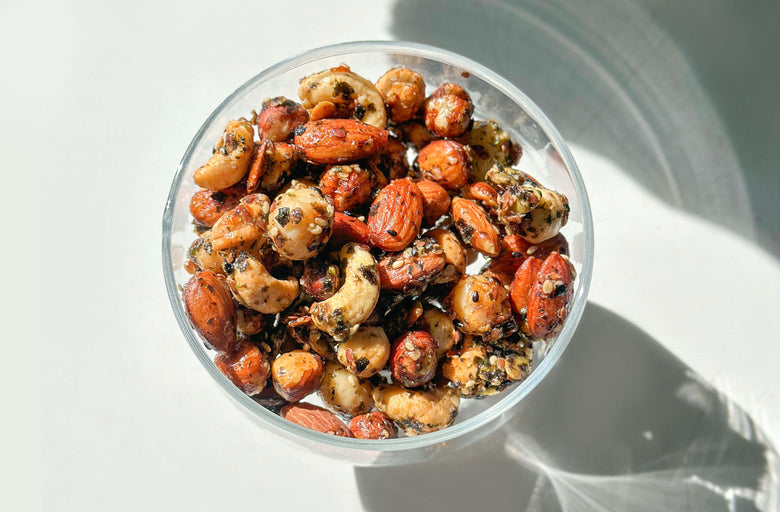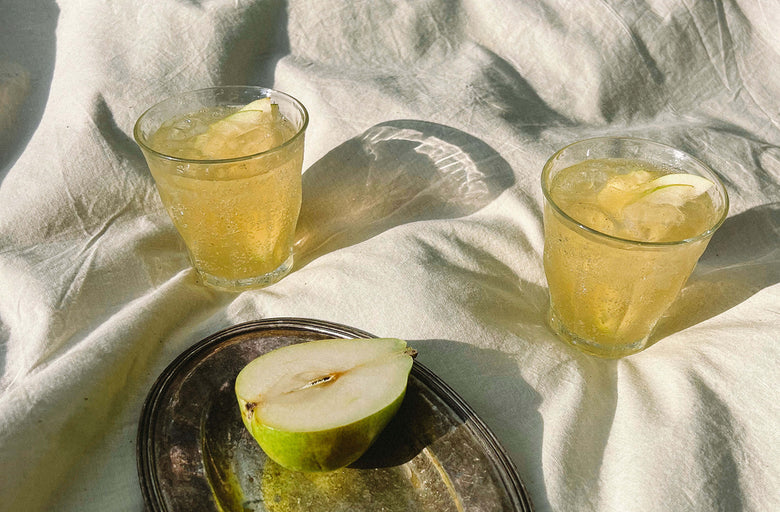At Sakara, the turnaround time between the farmers who snip the produce at its peak to when it’s delivered to your front doorstep, is a couple of days, which can’t be said for the world of conventional produce. Typically, to avoid bruising and damage on long travels, the harvest is ubiquitously picked before its maturity—but this is well before your fruits and veggies have reached their potential in nutrient levels. That being said, when you have green and under ripe vegetables in your fridge, what should you do? Or, when the “perfect window” has come and gone, how do you reimagine an over-oxidized plant? Below, discover a roundup of plants that can be added creatively to recipes no matter their life stage. That way, there’s no need to be extra patient or throw away any past-their-prime fruits.
BANANAS |
Green/Unripe: Green bananas can be harsh to eat raw, but they contain a powerful prebiotic fiber known as resistant starch, which has been known to lower blood glucose levels and balance leptin, the hormone related to satiation and immunity. You can dehydrate and ground green bananas, making into a baking flour that’s high-fiber and grain-free. Experiment with using it in a baking recipe and enjoy the earthy flavor. Alternatively, you can sauté or fry as you would plantains.
Ripe: At their peak ripeness, bananas increase in antioxidant content and are helpful to induce a bowel movement. Full of magnesium—a critical mineral that activates vitamin D, makes serotonin (the happy hormone) and melatonin (the sleep hormone)—bananas make excellent on-the-go snacks throughout the day. Add an extra protein boost and dip one in this vanilla cashew dream cream for the ideal pre-workout bite.
Overripe/Brown: Besides the obvious use case of banana bread (we have a plant-based and zero refined sugar recipe if you’re so inclined), you can also use it as an egg replacement in recipes (1/2 banana= 1 egg) or freeze for future smoothies. From a nutrition standpoint, the chlorophyll that once made these bananas green has almost completely broken down which amplifies the antioxidant content, making brown bananas an antioxidant powerhouse.

PAPAYA |
Green/Unripe: When papaya is green, it contains papain, an enzyme that helps with nutrient absorption and bloat in the GI tract. Traditionally, indigenous cultures in Central and South America would wrap meat in papaya leaves to tenderize because of its abundance in this enzyme that breaks down proteins; in the body, papain helps to break down this macronutrient as well. It’s also rich in inulin, a prebiotic fiber that has been studied to contain some potentially anti-cancer properties. Incorporate these enzymes every day by taking the Complete Probiotic Formula or enjoy a whole-food experience and make plant-based Som Tum salad inspired by LA favorite haunt, Night+Market Song.
Semi-Ripe: As an extra-healing dessert, halve a papaya and spritz with lime to soothe a tummy after a particularly heavy meal.
Ripe: In its juiciest stage, the pinkish-red flesh is packed with antioxidants; peel, cube, and pair with avocado, herbs, and lime as a salsa fresca. You can also add to a tropical smoothie with a dose of greens.
AVOCADO |
Unripe: At first glance, hard green avocados might seem unusable, but it’s time to get creative. Add it to a sauce or soup as a thickening agent, while reaping the benefits of healthy monounsaturated fats, which are important to reduce inflammation, as well as support the skin barrier, protect hair follicles, and act as brain food. Fat is also essential because it helps your body absorb other nutrients, helping you reap the benefits of Vitamin A, D, E, and K. Note: if guacamole is on the menu, make an extra creamy version by blending under-ripe avocados, coconut yogurt or plant-based sour cream, cilantro, lime, and spices to kick up the heat.
Ripe: Ah, the perfect avocado. Firm when you squeeze it, a little more smooth than bumpy, and the green peel should now be a dark purple/black. Peel back the stem cap to see if it reveals a bright verdant green, then you’ll know it’s prime time. The possibilities are endless; some of our favorite options as of late are this smoky bean salad, a mineral-rich nori wrap, or this savory chickpea scramble for breakfast.
Overripe: Once your avo has browned, it can still add sparkle to plenty of dishes. You can add to a plant-based brownie recipe for added moisture and creaminess, an avocado-cacao mousse with a metabolism-revving twist, or you can freeze for your next smoothie. Remember the hair benefits of healthy fats? Apply avocado directly to your hair as a mask, and reap the benefits of biotin and potassium, which can help boost follicle strength and shine, respectively.

TOMATO |
Unripe: If you have green tomatoes on hand, slice and sear them up, adding lemon, salt, and pepper. You can also add to a bright green melon gazpacho for a late spring/early summer lunch. Green tomatoes specifically are high in vitamin K and beta-carotene, as well as vitamin C, which is essential in building collagen and protecting your skin.
Ripe: Rich in lycopene, an antioxidant which has been shown to protect against heart and lung disease, boost testosterone and male fertility, as well as nourish DNA by fighting free radicals. Red and pink foods also contain astaxanthin, an antioxidant that acts like “internal sunscreen” to protect against UVA and UVB radiation. For meal ideas, try this zucchini and beet noodle dish or a bright curry stew.
Overripe: When they’ve gone a little soft, this is the ideal time to slow roast them, toss with balsamic, and chop; then add to a bowl of organic greens, atop gluten-free pasta, or tuck into a sandwich.
DISCOVER MORE CREATIVE, LOW-WASTE KITCHEN IDEAS






